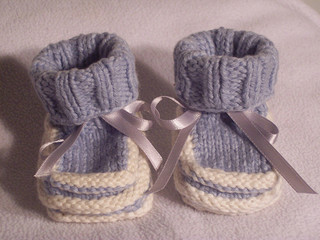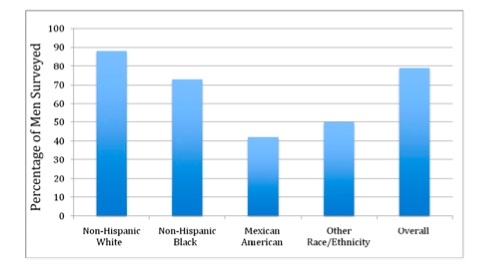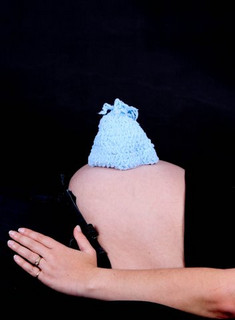August 27, 2012
American Academy of Pediatrics Releases Revised Policy on Newborn Male Circumcision
By: Sharon Muza, BS, LCCE, FACCE, CD/BDT(DONA), CLE | 0 Comments

photo licensed by creative commons
handmaidenbymaria
On August 27th, 2012, the American Academy of Pediatrics (AAP) released their updated policy on newborn male circumsion along with their updated technical report reviewing current research. This official statement follows a week or so of speculation in the media that the AAP's new statement would fall on the side of supporting newborn male circumcision, stating that the benefits outweigh the risks.
The new policy statement replaces the last AAP recommendation on this topic released in 1999 (1). The just released statement makes the following recommendations:
-
Evaluation of current evidence indicates that the health benefits of newborn male circumcision outweigh the risks, and the benefits of newborn male circumcision justify access to this procedure for those families who choose it.
-
Parents are entitled to factually correct, nonbiased information about circumcision that should be provided before conception and early in pregnancy, when parents are most likely to be weighing the option of circumcision of a male child.
-
Physicians counseling families about elective male circumcision should assist parents by explaining, in a nonbiased manner, the potential benefits and risks and by ensuring that they understand the elective nature of the procedure.
-
Parents should weigh the health benefits and risks in light of their own religious, cultural, and personal preferences, as the medical benefits alone may not outweigh these other considerations for individual families.
-
Parents of newborn boys should be instructed in the care of the penis, regardless of whether the newborn has been circumcised or not.
-
Elective circumcision should be performed only if the infant's condition is stable and healthy.
-
Male circumcision should be performed by trained and competent practitioners, by using sterile techniques and effective pain management.
- Analgesia is safe and effective in reducing the procedural pain associated with newborn circumcision; thus, adequate analgesia should be provided whenever newborn circumcision is performed.
-
Nonpharmacologic techniques (eg, positioning, sucrose pacifiers) alone are insufficient to prevent procedural and postprocedural pain and are not recommended as the sole method of analgesia. They should be used only as analgesic adjuncts to improve infant comfort during circumcision.
-
If used, topical creams may cause a higher incidence of skin irritation in low birth weight infants, compared with infants of normal weight; penile nerve block techniques should therefore be chosen for this group of newborns.
- Key professional organizations (AAP, the American Academy of Family Physicians, the American College of Obstetricians and Gynecologists, the American Society of Anesthesiologists, the American College of Nurse Midwives, and other midlevel clinicians such as nurse practitioners) should work collaboratively to:
-
Develop standards of trainee proficiency in the performance of anesthetic and procedure techniques, including suturing;
-
Teach the procedure and analgesic techniques during postgraduate training programs;
-
Develop educational materials for clinicians to enhance their own competency in discussing the benefits and risks of circumcision with parents;
-
Offer educational materials to assist parents of male infants with the care of both circumcised and uncircumcised penises.
- The preventive and public health benefits associated with newborn male circumcision warrant third-party reimbursement of the procedure.
As a result of research by the AAP Task Force commissioned for the purpose of updating their policy statemen, specific benefits from male circumcision were identified for the prevention of urinary tract infections, acquisition of HIV, transmission of some sexually transmitted infections, and penile cancer. Male circumcision does not appear to adversely affect penile sexual function/ sensitivity or sexual satisfaction. This task force was made up of AAP representatives from specialty areas, including anesthesiology/ pain management, bioethics, child health care financing, epidemiology, fetus and newborn medicine, infectious diseases (including pediatric AIDS), and urology. The Task Force also included members of the AAP Board of Directors and liaisons representing the American Academy of Family Physicians (AAFP), the American College of Obstetricians and Gynecologists (ACOG), and the CDC
Male circumcision consists of the removal of some or all of the foreksin (prepuce) from the penis. It is one of the most commonly performed procedures in the world and in the United States is most commonly done during the newborn period. The current estimated rate of male circumcision in the United States ranges from 42% to 80% among various populations.(2-6)
Circumcision rates were highest in the Midwestern states (74%), followed by the Northeastern (67%) and Southern states (61%). The lowest circumcision rates were found in the Western states (30%) (See Table 1)

Source: http://pediatrics.aappublications.org/content/early/2012/08/22/peds.2012-1990
The AAP discussed the ethical issues of newborn male circumcision, recognizing that the law allows parents or guardians to make medical decisions on behalf of the minors that they are responsible for, when provided unbiased information by a health care provider and taking into account cultural, religious, ethnic traditions and medical factors. The parents or guardians should be advised to take this into consideration. The AAP reccomends HCPs counseling families that are choosing to circumcise their male newborns to use a qualified medical provider in a medical facility rather than a traditional/religious provider in a nonmedical environment. There was also discussion on counseling parents about the potential risks of delaying the procedure beyond the newborn period, The AAP Task Force stated that there is less risk to the child when the procedure is done as a newborn.

Prevalence of male circumcision, according to self-report; United States, 1999-2004
Source: http://pediatrics.aappublications.org/content/early/2012/08/22/peds.2012-1990.full.pdf+html
The AAP does acknowledge that this procedure is elective and the parents should be informed that this is considered an elective procedure.
The AAP Task Force, in their technical report, shares their current literature review and research findings that provided for the basis of each of the current recommendations. Additionally, the technical report discusses studies that provide information on risks and complications of this elective procedure. The technical report is a comprehensive review of the information the AAP used to formulate their current recommendations and I encourage you to not only read it for your own information, but to have it available as a resource for parents who are looking for the full statement and the research behind it.
Future Research is Needed
The Task Force identified important gaps in their knowledge of male circumcision and urges the research community to seriously consider these gaps as future research agendas are developed. Although it is clear that there is good evidence on the risks and benefits of male circumcision, it will be useful for this benefit to be more precisely defined in a US setting and to monitor adverse events. Specifically, the Task Force recommends additional studies to better understand:

photo licensed by creative commons
Nina Matthews Photography
- The performance of elective male circumcisions in the United States, including those that are hospital- based and nonhospital-based, in infancy and subsequently in life.
- Parental decision-making to develop useful tools for communication between providers and parents on the issue of male circumcision.
- The impact of male circumcision on transmission of HIV and other STIs in the United States because key studies to date have been performed in African populations with HIV bur- dens that are epidemiologically dif- ferent from HIV in the United States.
- The risk of acquisition of HIV and other STIs in 0- to 18-year-olds, to help inform the acceptance of the procedure during infancy versus deferring the decision to perform circumcision (and thus the procedure's benefits) until the child can provide his own assent/consent. Because newborn male circumcision is less expensive and more widely available, a delay often means that circumcision does not occur. It will be useful to more precisely define the prevention benefits conferred by male circumcision to inform parental decision-making and to evaluate cost-effectiveness and benefits of circumcision, especially in terms of numbers needed to treat to prevent specific outcomes.
- The population-based incidence of complications of newborn male circumcision (including stratifications according to timing of procedure, type of procedure, provider type, setting, and timing of complications [especially severe and non- acute complications]).
- The impact of the AAP Male Circumcision policy on newborn male circumcision practices in the United States and elsewhere.
- The extent and level of training of the workforce to sustain the availability of safe circumcision practices for newborn males and their families.
The Role of The Childbirth Educator
The decision of whether to circumcise a male newborn is frequently made early in the pregnancy and even before conception.(7-9) In a cross-sectional study of parents of 55 male infants presenting to a family practice clinic for a well-child visit, 80% of parents reported that the circumcision decision was made before a discussion occurred with the clinician about this issue. Only 4% of parents reportedly discussed circumcision with their clinician before the pregnancy.(6) This finding is substantiated by the 2009 AAP survey of 1620 members with a response rate of 57%, in which most respondents reported that parents of newborn male patients generally do not seek their pediatrician's recommendation regarding circumcision; only 5% reported that "all" or "most" parents "are uncertain about circumcision and seek their recommendation" about the procedure. (10) There is fair evidence that parental decisions about circumcision are shaped more by family and socio- cultural influences than by discussion with medical clinicians or by parental education.(7, 11)
The AAP states that parents are entitled to factually correct, nonbiased information about circumcision and should receive this information from clinicians before conception and/or early in pregnancy, which is when they are making choices about circumcision.
I found it interesting that research indicated that most parents have most likely made a decision on newborn male circumcision prior to participating in any childbirth classes that they may be attending. I also know that talking about circumcision in a childbirth class can be a sticky, uncomfortable and emotional discussion for both attendees and educators. It may be difficult but it is important to share information on this topic in the same way that we share other information about pregnancy, labor, birth and parenting; providing resources, sources of information and avenues for additional information that the parents can access later for information.
I invite you to share your thoughts on the new AAP recommendation on newborn male circumcision and how you discuss this topic in your childbirth classes. Do you avoid speaking about it altogether because it makes you uncomfortable? How do you bring it up? What do you do when the topic becomes emotional amongst participants? Will you change what you do based on this newly released recommendation? I invite discussion but ask that you follow Science & Sensibility's policy on participation and keep all comments polite and respectful. - SM
References
- American Academy of Pediatrics. Circumcision Policy Statement. Task Force on Circumcision. Pediatrics. 1999;103(3):686- 693. Reaffirmation published on 116(3): 796
- Centers for Disease Control and Prevention (CDC). Trends in in-hospital newborn male circumcision-United States, 1999-2010. MMWR Morb Mortal Wkly Rep. 2011;60(34): 1167-1168
- Warner L, Cox S, Kuklina E, et al. Updated trends in the incidence of circumcision among male newborn delivery hospitalizations in the United States, 2000-2008. Paper presented at: National HIV Prevention Conference; August 26, 2011; Atlanta, GA
- Overview of the Healthcare Cost and Utilization Project (HCUP). Rockville, MD: Agency for Healthcare Research and Quality; 2009. Available at: www.hcup-us. ahrq.gov/overview.jsp
- Nelson CP, Dunn R, Wan J, Wei JT. The increasing incidence of newborn circumcision: data from the nationwide inpatient sample. J Urol. 2005;173(3):978-981
- Xu F, Markowitz LE, Sternberg MR, Aral SO. Prevalence of circumcision and herpes simplex virus type 2 infection in men in the United States: the National Health and Nutrition Examination Survey (NHANES), 1999-2004. Sex Transm Dis. 2007;34(7): 479-484
- Tiemstra JD. Factors affecting the circumcision decision. J Am Board Fam Pract. 1999;12(1):16-20
- Walton RE, Ostbye T, Campbell MK. Neonatal male circumcision after delisting in Ontario. Survey of new parents. Can Fam Physician. 1997;43:1241-1247
- Ciesielski-Carlucci C, Milliken N, Cohen NH. Determinants of decision making for circumcision. Camb Q Healthc Ethics. 1996;5 (2):228-236
- American Academy of Pediatrics. Periodic Survey of Fellows: Counseling on Circumcision. Elk Grove Village, IL: American Academy of Pediatrics; 2009
- Binner SL, Mastrobattista JM, Day MC, Swaim LS, Monga M. Effect of parental education on decision-making about neonatal circumcision. South Med J. 2002;95 (4):457-461
Tags
Childbirth education ACOG Informed Consent AAP American Academy of Pediatrics Newborns Babies Pediatricians Circumcision